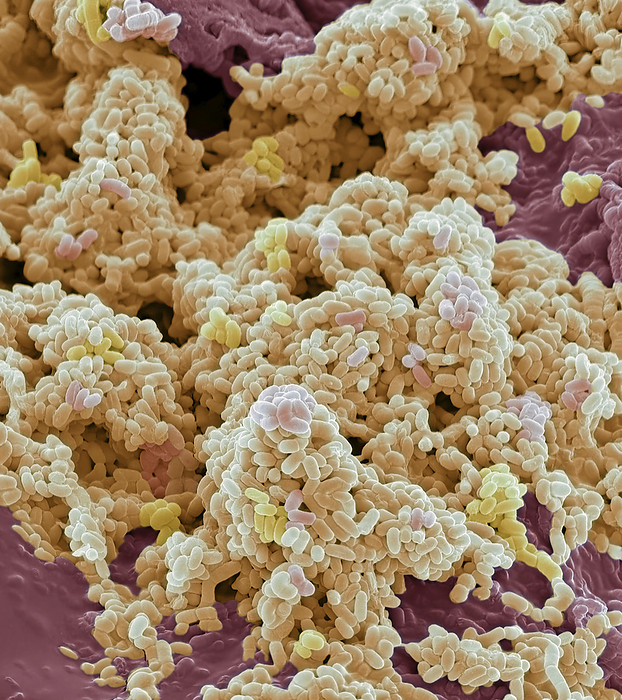
RM
Lip microbiome, SEM
Lip microbiome. Coloured scanning electron micrograph (SEM) of bacteria cultured from a lip. When kissing on the lips or cheeks bacteria are exchanged from one person to another. Among humans, approximately 90% of cultures have some type of kissing. Usually it is platonic, such as a parent kissing a child. However, in 46% of all cultures, it can go as far as intimate kissing. A recent scientific study has revealed that on average 80 million bacteria are transferred to the partner during a kiss of 10 seconds. Most partners share a more similar oral microbiome compared to unrelated individuals. Some of the collective bacteria among partners are only transiently present, while others have found a true niche and survive permanently, allowing long-term colonization. Magnification: x1000 when printed at 10cm wide., by STEVE GSCHMEISSNER/SCIENCE PHOTO LIBRARY

More
Top Categories
